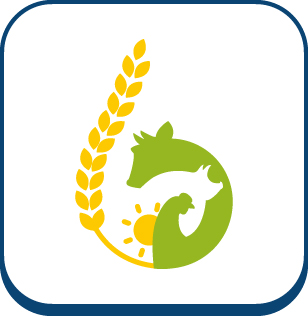Estrus synchronization is important for optimal management of gilt reproduction in pig farms. Hormonal treatments, such as synthetic progestogens, are used on a routine basis, but there is a growing demand for non-hormonal alternative breeding tools. Before puberty, gilts exhibit a 'waiting period,' related to the ovarian development and gonadotrophin secretions, during which external stimulations, such as boar exposure, could induce and synchronize first ovulation. Practical non-invasive tools for identification of this period in farms are lacking. During this period, urinary oestrone levels are high, but urine sampling is difficult in group-housed females. The aim of this work was to search for specific biomarkers of the 'waiting period' in saliva and urine. In total, nine 144- to 147-day-old Large White gilts were subjected to trans-abdominal ultrasonography three times a week for 5 weeks until puberty detection (week -5 to week -1 before puberty). Urine and saliva samples were collected for oestrone assay to detect the 'waiting period' and for metabolome analysis using 1H-nuclear magnetic resonance spectroscopy to detect potential biomarkers of the 'waiting period.' Gilts were slaughtered 7 days after puberty detection for puberty confirmation. Results were consistent with ultrasonography data for six gilts. Urine and saliva samples from these six gilts were analyzed. Urinary estrone concentration significantly increased 2 weeks before puberty detection. Metabolome analysis of urine samples allowed the identification of 78 spectral bins, among them, 42 low-molecular-weight metabolites were identified. Metabolome analysis of salivary samples allowed the identification of 59 spectral bins, among them, 23 low-molecular-weight metabolites were detected and 17 were identified. No potential biomarker was identified in urinary samples. In saliva, butyrate and 2HOvalerate, 5.79 ppm (putatively uridine), formate, malonate and propionate could be biomarker candidates to ascertain the pre-puberty period in gilt reproduction. These results confirm that non-invasive salivary samples could allow the identification of the physiological status of the gilts and presumably the optimal time for application of the boar effect. This could contribute to synchronize puberty onset and hence to develop non-hormonal breeding tools.
Article en accès ouvert disponible ici (s’ouvre dans le site de l’éditeur)
Salivary and urinary metabolome analysis for pre-puberty-related biomarkers identification in porcine
Ajouter à ma liste
Auteurs :
Goudet G, Nadal-Desbarats L, Douet C, Savoie J, Staub C, Venturi E, Ferchaud S, Boulot S, Prunier A
Fiche technique
Titre :
Salivary and urinary metabolome analysis for pre-puberty-related biomarkers identification in porcine
Date sortie / parution :
2018
Référence :
Animal, 2018, 5 septembre, 11 pages








